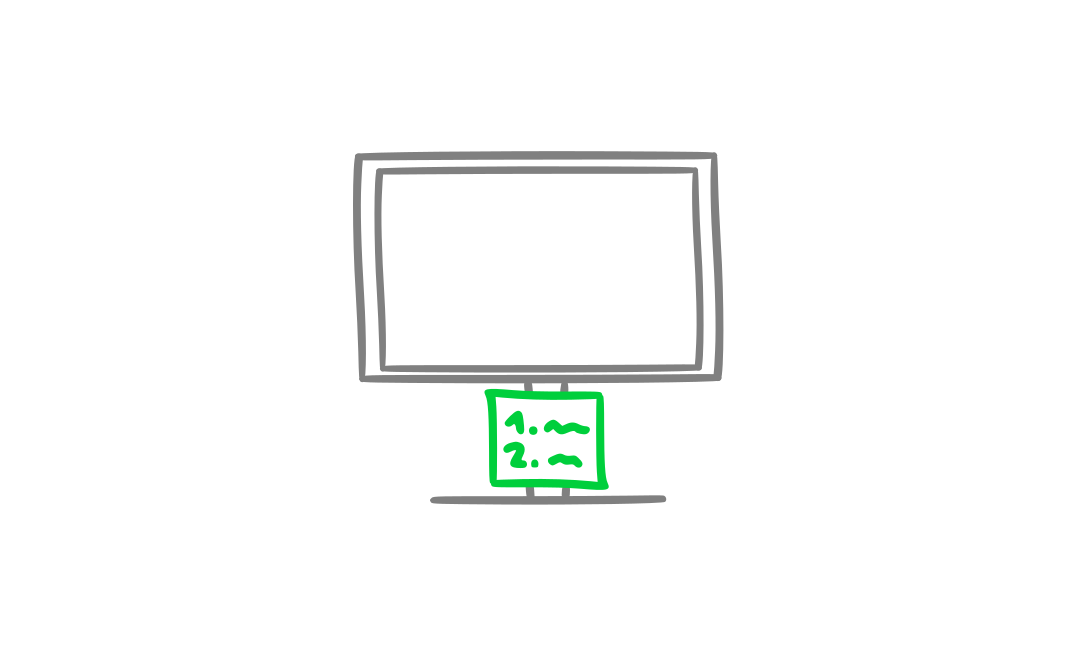4 ways to make your to-do lists less overwhelming

1. Hide irrelevant to-dos
Say you have 3 projects you're working on. You come to your desk and you see a visual avalanche of post-it notes.
You turn on your computer, open the browser, and have 25 tabs open. You open your task manager and there's a list of 15 things to get done.
Is that a recipe for focused work?
Hardly.
Each to-do item, post-it note, document, or open website in your field of vision is signalling to your brain: here's something unfinished.
How are you supposed to focus if you have a hundred unfinished reminders in sight?
It takes effort just to block that visual noise out.
Behavior scientist B J Fogg realized he had that problem. He had a whiteboard with 3 big clusters of post-it notes for his main projects.
He realized that seeing all those post-its just overwhelmed him. One look at them meant an immediate jolt of stress.
How did he solve it?

To not get overwhelmed, he now uses a curtain to hide the part of the whiteboard that is not immediately relevant to what he wants to focus on.
This reduces visual clutter and boosts focus.
How can you use this principle? How can you hide irrelevant to-dos and reminders of unfinished things from sight?
2. Mark priority

When your to-do list is longer than 1 item, you have a problem:
You have to make a decision about what to work on first.
Do you start at the top? The bottom? The middle?
Without a decision, you're risking getting overwhelmed and not starting on anything.
Decide the order of tasks before you begin.
Not all tasks matter, so ask yourself often:
Which of these tasks are important?
And then mark those tasks visually.
Put a number next to the item (1, 2, 3) if there is a specific order. Or put an exclamation point or a star next to them if there isn't.
Got a long list? Decide which tasks matters the most and highlight them.
It's easier to focus if you can see what's important at a glance instead of having to think about it.
3. Divide your list explicitly into key and bonus items
Another way to clearly signal which task matter is to divide it into 2 main parts - key tasks (core, must-have) and bonus (stretch, nice-to-have) tasks.

One look at a list like that, and you know where you should focus your efforts. Bonus tasks may still matter, but they aren't critical.
When you divide your list explicitly on paper or in your favorite to-do app, you save your brain the effort required to divide it in your mind every time you look at it.
What's key? What's bonus?
4. Make a daily list
To-dos add up.
The list starts short, but then you realize you need to do more stuff and so the list expands. Every day, more to get done.
And before you know it, you're staring at a headache.
That's no good.
Additionally, having a long list doesn't make clear to us what we need to do today, or right now.
When we're not sure what to do right now, we often go do something unproductive instead of making a decision.
Make a daily temporary list

Instead of having a long list of things to get done by Friday, have a short list of tasks to do by the end of today.
Write 1-4 most important tasks on a post it note and put it in front of you.
This technique is super simple and super powerful.
Many people keep their tasks only in specific apps, but the moment you close the app or open another browser tab, what's important can slip from your memory.
And then the usual messages, emails, and urgent issues come your way and it's easy to lose track of what matters.
Keeping what matters most in sight at all times stops you from getting side-tracked.
If you want a bit more detail on this, we wrote a short post on technique alone.
Summary
4 ways to make your to-do list less overwhelming:
- Hide irrelevant to-dos from sight so that they don't stress you.
- Mark priority tasks on your list so that you don't have to do it in your mind.
- Divide your list into key and bonus items.
- Make a daily list to signal clearly to yourself what to focus on right now.
You don't have to do all 4, but each does help.
If we were to suggest 1 experiment to try in your work life, try the temporary daily list. Our clients find it surprisingly effective.



